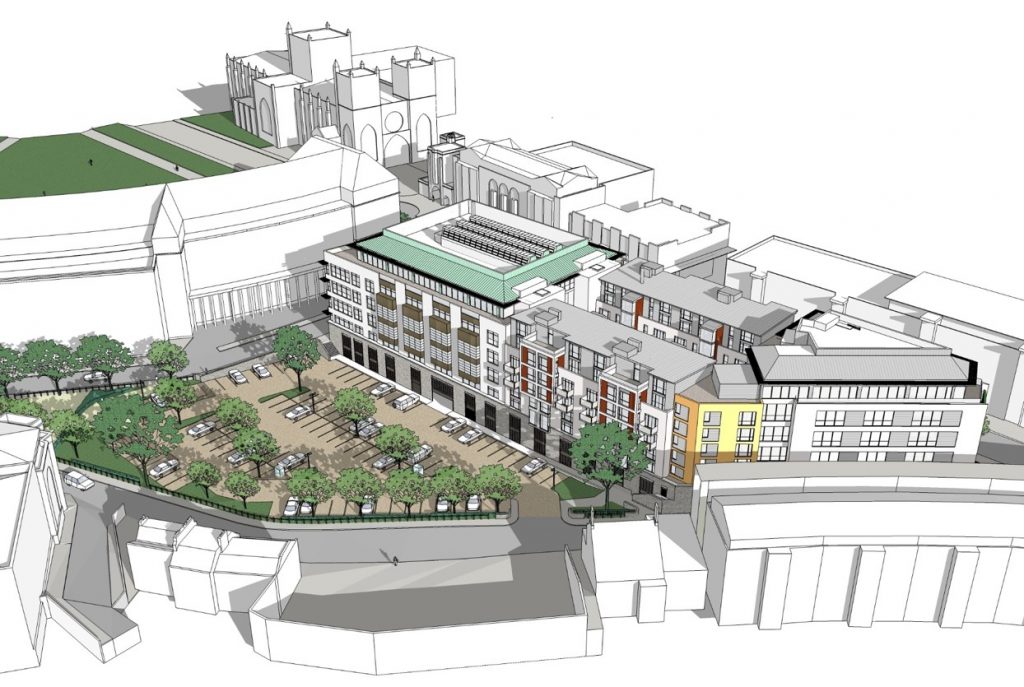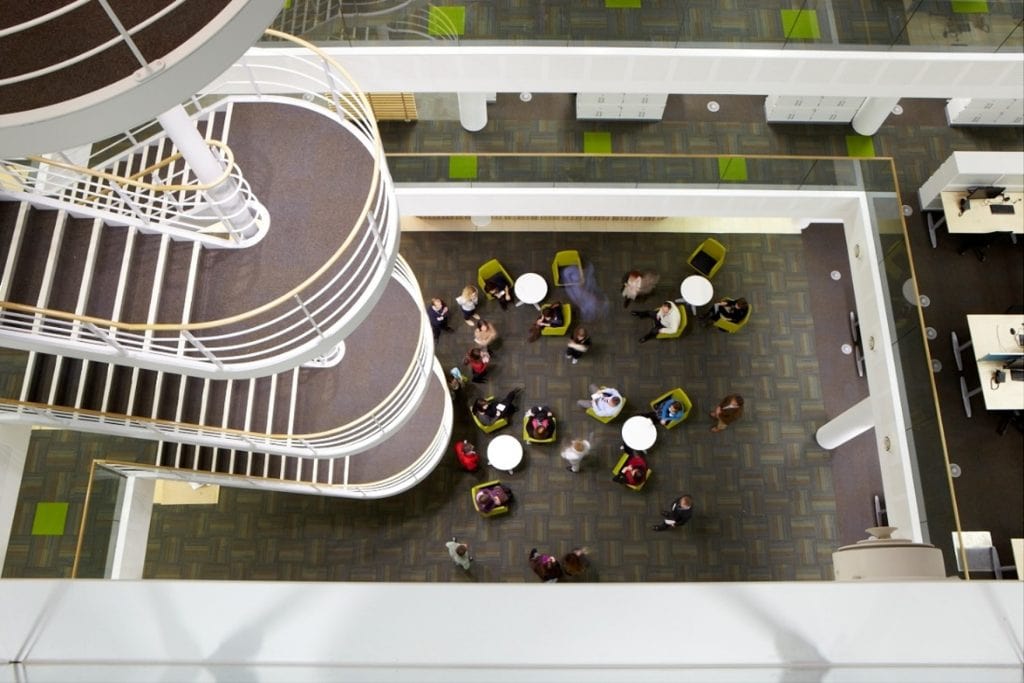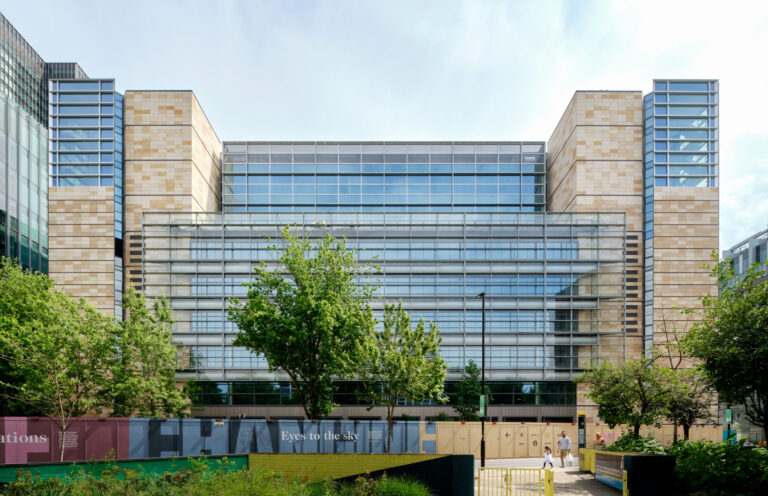Horizon House

Highlights
- Highest ever BREEAM rating of its type (office) when completed in 2010 (score of 85%)
- Operational performance Display Energy Certificate (DEC) Rating 78 (EPC Band B)
- 93% of staff respondents rated comfort conditions as acceptable or satisfactory
Approaches Used
- Ground source heat pump (GSHP) is used to preheat hot water all year round and also to heat the building during winter
- 100m2 of solar PV cells produce electricity for the building
- 45m2 of solar hot water collectors produce of hot water backed up by the GSHP and gas fired boilers
The ground source heat pump (GSHP) serves two thermal stores, one for low temperature hot water (LTHW) and one for chilled water (CHW).
The GSHP is the preferred heat source, followed by the gas-fired boilers. Low temperature hot water is taken from the thermal store at 45˚C-50˚C. When the return temperature is below 40˚C, the boilers are energised until the thermal store rises above 45˚C again.
The GSHP plant is the primary source of chilled water with a top-up turbo-chiller. It cools the chilled water thermal store to 10˚C. If the chilled water (CHW) return temperature is above 16˚C the chiller is turned on, until the CHW store drops to 10˚C again.
The stack effect ventilation strategy, which is carefully controlled by a system of opening devices, allows for good air circulation. Natural ventilation enters via perimeter windows, with windows and atrium vents automated to close at high wind speeds (10 m/s) and during rainy conditions. Roof lights at the top of the atrium are operated by window actuators, allowing natural ventilation to be exhausted at roof level. The automatic roof lights are controlled in groups and can also be individually managed by the Building Management System (BMS).
High level automated windows on each level are opened and shut according to the internal and external conditions, modulating to control the internal temperature. The mechanical ventilation system is in operation when external conditions are not suitable for natural ventilation. This uses fan coil units (FCUs) in the floor void with floor mounted supply air grilles.
Most desks have good access to daylight with local blind control and openable windows, and most of the open plan lighting is activated by daylight sensors and controlled to switch off at the end of the working day. Presence detection is in place for other areas to switch off lighting when unoccupied.




Related
1 Triton Square

21 Moorfields

8 Bishopsgate

Hammersmith Road



